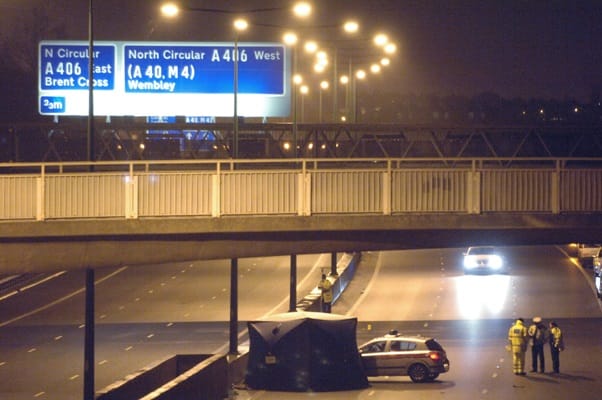The latest Transport for London report, published a few months ago, brought good news for Londoners.
The Casualties in Greater London study revealed that fatalities have decreased by 30% in the capital compared to the 2010-14 baseline—a far more significant reduction than the 7% decline seen across the rest of Great Britain.
Moreover, in 2023 London recorded the lowest number of road fatalities in its history, apart from 2021, when pandemic lockdowns drastically reduced traffic volume.
Overall, the number of people killed or seriously injured on the city’s roads fell by six per cent from 2022, dropping from 3,961 to 3,710.
Despite the reduction, the number of people harmed is still alarming. What is behind these numbers, and who is most at risk?
While perceptions about accidents often stem from personal experiences or media reports, a comprehensive analysis of the data provides a clearer picture of the reality.
The scale of the problem
London’s roads saw approximately 23,000 collisions in 2023, reflecting the ongoing challenges of urban traffic and safety management.
The majority of these incidents resulted in slight injuries, such as whiplash and bruising. However, 101 collisions resulted in fatalities, underscoring the persistent challenges in road safety.
Pedestrians, cyclists, and motorcyclists continue to face the highest risks. In 2023, these groups accounted for 80% of all individuals killed or seriously injured on London’s roads.
Motorcyclists, in particular, were 15 times more likely to be involved in fatal collisions compared to other transport modes. This equates to one motorcyclist fatality for every 5.6 million motorcycle journeys.
Additionally, there is a correlation between road traffic collisions and neighbourhood deprivation. The 10% of areas with the highest poverty experienced just over 2,600 collisions in 2023, more than double the 1,182 collisions in the 10% of areas with the lowest deprivation.
The leading causes of road accidents
Several factors contribute to road accidents in London:
- Speeding: Speed was a contributory factor in approximately half of the fatal collisions in 2023.
- Distracted Driving: Activities such as mobile phone use divert attention from the road, increasing the likelihood of accidents.
- Driving Under the Influence: Alcohol and drugs impair judgment and reaction times, leading to severe incidents.
- Reckless Behaviour: Aggressive driving, including tailgating and abrupt lane changes, poses significant risks.
- Environmental Factors: Poor road conditions, reduced visibility, and adverse weather can also lead to accidents.
London’s most dangerous roads and junctions
Certain areas have been identified as accident hotspots. For instance, the Hammersmith Flyover in West London recorded 287 incidents over a ten-year period, making it one of the most hazardous roundabouts in the UK. Other notable locations include:
- Brixton Road/Acre Lane/Coldharbour Lane
- Tottenham Court Road
- Monument (King William Street/Eastcheap/Cannon Street, City of London)
- Trafalgar Square roundabout
- Peckham High Street/Rye Lane
- Shoreditch Triangle
- Kingsland High Street/Ridley Road
- Tooting
- St Pancras
- Peckham High Street/Peckham Hill Street
- Upper Tooting Road
- Redbridge Roundabout
- Crooked Billet in Waltham Forest
The effectiveness of safety initiatives
The reduction in accidents and fatalities didn’t happen by chance. London has implemented, over the years, several safety measures to reduce collisions.
- 20mph Speed Limits: The introduction of 20mph zones has been associated with a 50% reduction in the number of children killed or seriously injured on the roads.
- Low Traffic Neighbourhoods (LTNs): Implemented to reduce through-traffic in residential areas, LTNs have been associated with a 70% reduction in injury numbers within these zones.
- Bus Safety Programme: Transport for London (TfL) has introduced measures such as Intelligent Speed Assistance on buses to ensure compliance with speed limits. In 2023, there were 252 serious injuries and six fatalities involving TfL buses, representing a 43% reduction in bus-related fatalities compared to the 2010-2014 baseline.
What needs to happen next?
The results are encouraging, but to improve road safety further, strengthening enforcement of traffic laws is crucial, particularly in addressing speeding and mobile phone use. Ensuring stricter penalties and more efficient monitoring can help deter dangerous behaviours.
Investing in infrastructure improvements is also essential. Safer road designs, including segregated cycle lanes and improved pedestrian crossings, can significantly reduce risks for vulnerable users.
Public awareness campaigns remain a key component of safety efforts. Educating road users about safe behaviours and the consequences of violations can encourage more responsible driving and pedestrian habits.
Technological innovations offer another avenue for progress. AI-driven traffic management systems and vehicle safety features can proactively identify and address potential hazards, making London’s roads safer for everyone.
Finally, policy commitment is necessary to drive long-term change. Setting ambitious national targets for casualty reduction can create a framework for coordinated action and accountability, ensuring that road safety remains a priority at both local and national levels.
For those affected by road accidents, particularly motorcyclists, who remain one of the most vulnerable groups, seeking legal guidance is often necessary.
London motorcycle accident solicitors can provide essential support in navigating compensation claims, ensuring that injured riders receive the financial and legal assistance they need.
With motorcyclists being at significantly higher risk of serious injury, having access to experienced legal representation can help them recover damages for medical costs, lost earnings, and ongoing rehabilitation.
London’s roads move fast, but safety shouldn’t be left behind
London’s avenues and lanes tell a story—of movement, ambition, and progress, but also of loss. Laws, infrastructure, education, and technology each contribute to safer streets, but true progress comes from awareness. After all, road safety is ultimately about protecting lives.

